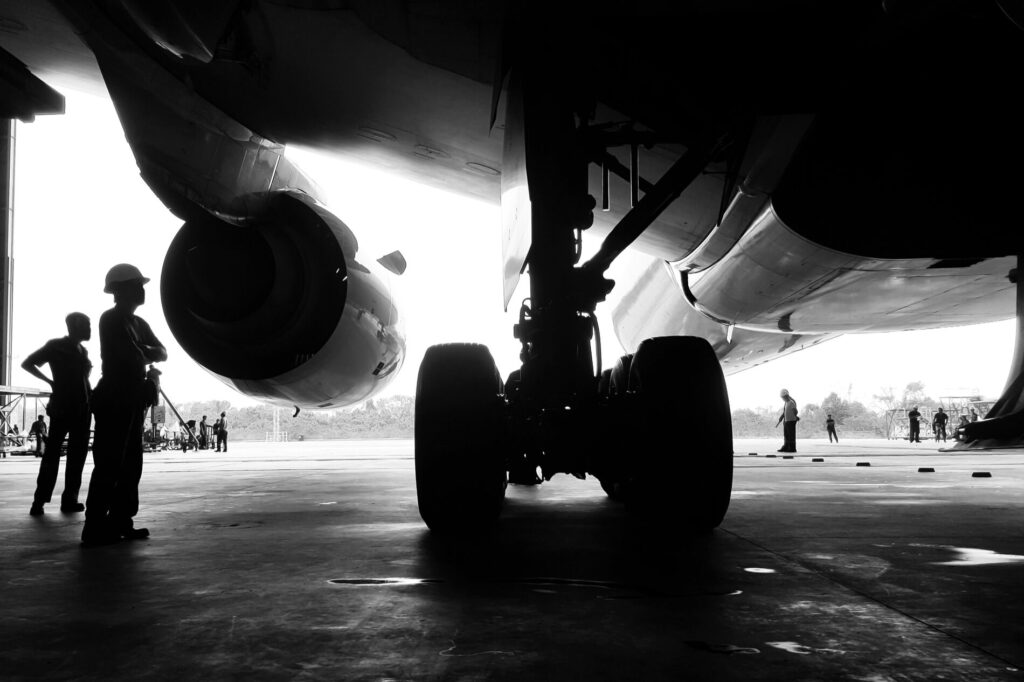The COVID-19 pandemic has considerably lowered demand in air transport and thus reduced the number of flights. Fewer planes flying also means fewer maintenance needs. In this context, all actors of the MRO industry have seen their business impacted. But is the situation as dark as it is painted?
Prior to the COVID-19 crisis, the MRO market was expected to represent a global market of $87 billion. That number was initially expected to be reduced by half, with a forecast of $42.7 billion in May 2020. The industry now foresees all MRO spending to represent a global $35 billion. But the industry is not monolithic and some sectors are more affected than others.
Airframe maintenance
Even with the prospect of a rebound, some MRO businesses could be impacted in the long term. The component repair sector should struggle as airlines will not fly at full capacity before long, and are currently consuming their in-house inventories or the used parts from aircraft they decommissioned amid the crisis.
In general, the maintenance sector is driven by aircraft older than 10 years. But low demand forced carriers to retire some of their aircraft and, quite logically, prioritized their oldest planes. Even if those aging aircraft were to be replaced by newer ones, it will take years for heavy maintenance cycles to come back to previous levels. MRO providers might find a brief relief with the decision of some carriers to defer or cancel orders, meaning that older, and thus more maintenance-needy planes, could operate a bit longer.
Engine business
With shop visits ranging from $3 million to $10 million depending on the aircraft, engine overhaul services will still represent a sizable market. However, visits have dropped by half throughout 2020. As a way to save cash, airlines ungrounded aircraft with the newest engines in order to avoid costly overhauls. With an abundance of engines available on stored aircraft, swaps will be preferred over repairs.
Similarly to airframe maintenance, the engine business will be affected in the long-run by the early retirement of old aircraft, such as the Airbus A380 and the Boeing 747, whose engines represented a significant part of maintenance expenses for carriers.
USM services
Compared to other MRO services, the used serviceable material (USM) business might keep its head out of the water if the recovery is not long in coming. Valued at almost $5 billion in 2019, the availability of spare engines and airframes could see revenue plateauing for 2020. Once demand picks up again, carriers will be more than willing to use USM services instead of OEM parts. However, the recovery might not be uniform. While demand for engine parts should pick up quickly, it could take a bit longer for other airframe components to meet previous demand levels.
Modification and conversion
Seen as a lifeline during the crisis, aircraft conversion to help carriers find ancillary revenue (with the emergence of the “preighter” concept for example) is only temporary. More permanent modifications could appear on the market down the line due to health requirements, such as new air filter systems or antibacterial surfaces. But those are still under development and it might take years for airlines to see them as a priority without governmental pressure.
Retaining the expertise
Once aircraft will take back to the skies, the surge in MRO demand for post-storage services could lead to a shortage of staff. During the pandemic, some technicians reconverted to less affected parts of the business. Prior to the crisis, in 2018, Boeing estimated that the aviation industry would need 754,000 new aircraft technicians in the coming two decades. While it might take some time to see such a demand again, MRO providers should still find ways to keep experienced technicians.
A way forward?
In order to alleviate the impact of low-demand in the air transport industry, the MRO businesses may have to follow the example of carriers by finding alternative revenue or expanding the scope of their services (for example to cargo or military markets.)
While the consequences of the pandemic were dramatic for the industry, they also offer a time for consolidation and innovation. Technologies such as digital twins, real-time monitoring of aircraft condition, and predictive maintenance, could be a lever for service providers to cope with the reduced MRO budget of airlines. Digitalization could also play an important role in improving service efficiency: paper-free processes, where all the functions to manage tasks and oversee progress from a tablet could reduce lead-time from aircraft maintenance services. However, such innovation would require changes not only in the industry culture but also from safety regulators.

